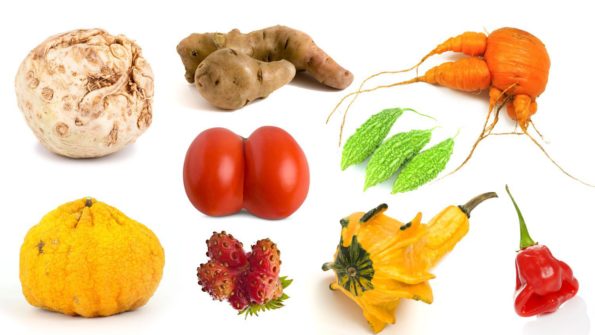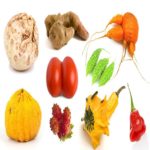It’s time to look beyond the aesthetics.
The following article was published in Eartha on 23 January 2017.
In her book ‘Behind The Kitchen Door’, author Saru Jayaraman writes, “It might sound like I’m romanticizing these small Italian farms, which have their own share of difficulties, but one thing that struck me during our trip is that there is nothing romantic or revolutionary about this kind of ‘local sourcing’, or organic and sustainable farming. It is what farmers have done for millennia around the world, including Mamdouh’s and my home countries.”
Saru Jayaraman is the co-founder of Restaurants Opportunities Centers United (ROC-United), an organisation that works to improve labor practices among restaurant workers. Reading this book opened up a new aspect of sustainability for me. While the book focuses on the American restaurant sector, the underlying issues of worker discrimination and poor working conditions are global. Suddenly, the airbrushed image of a white, ‘farm to table’ plate with bright green vegetables and delicious cherry tomatoes began to look a little botched to me.
Whether it is workers in restaurants or farmers in the fields, our food choices are disengaged from the people who work at the source. This leaves us with lofty expectations for the end products, especially when they have a ‘sustainable practice’ tag attached to them. We are no longer what we eat, but what we choose to eat. For a lot of people, concepts such as local, organic or sustainable bring about an image of handpicked fruits and vegetables that look and taste great from the first bite. As our choices become increasingly specific, we seek the perfect experience in our food, and place the onus on the produce.
In her essay ‘Foodie localism loves farming in theory, but not in practice‘, Debbie Weingarten, co-founder of the Farm Education Resource Network writes “While local food has emerged as an alternative to industrial food, many people have simply transferred their expectations from the grocery store to the farmers’ market. Consumers still expect a global array of products, despite natural restrictions in season or geography. Additionally, emotional expectations surrounding food have increased.”

Added to all of this is a Luddite attitude towards processes and technology that are sometimes needed to ensure that the farmer’s hard work does not go to waste. Not all our neighbourhoods are farms, so even a basic ‘farm to table’ approach needs some amount of supply chain and storage based infrastructural support.
While local food has emerged as an alternative to industrial food, many people have simply transferred their expectations from the grocery store to the farmers’ market. Consumers still expect a global array of products, despite natural restrictions in season or geography.
“If the organic tomato is just a vehicle for romantic fallacy, then we have to look dispassionately at how they are grown from the perspective of sustainability,” writes food and agricultural expert, Dr Louise Fresco. In her essay, Dr Fresco goes on to explain that simply expecting to recreate an experience based on the choice of produce (hand picked and sold in a basket, anyone??) is not always possible. The context of eating, psychology and gastronomy play an important role in this affair, she writes.
Of the 1.3 billion tonnes of food wasted yearly, 40 percent consists of fruits and vegetables. After reading this fact, it seems rather incredulous that we let aesthetics get in the way. 2016 was, in fact, a big year for the ugly produce or wonky vegetables movement as it is also called. While I am not a big fan of that name, the fact remains that 2016 was monumental in this regard with supermarkets across many countries deciding to make room for that less-than-perfect looking produce. Some stores in Belgium, South Africa, Netherlands, Canada, US and UK either began selling misshapen, weather-blemished fruits and vegetables or expanding their existing market for them. I have also read about many food start-ups that home deliver such produce. But what is most exciting about all of this is that instead of masking the fruits and vegetables in processed products, they sell them as they are, to make the point. As the world is opening its eyes to this new facet of food, it is high time we start moving in that direction and away from the image of shiny, perfectly shaped produce.
I am going to digress here a bit, but just to make a point. When I spoke to Durga Menon about her venture Lluvia Bakery, I realised that our expectations about food appearances run deeper than we think. Lluvia Bakery makes healthy baked goods, but Durga does much more with this initiative. Employees in this bakery, all from low-income backgrounds, have been taught baking and running the trade by Durga. When she began working with whole wheat based products, there were not many people who had made that switch. Looking very rustic, the products were met with some skepticism. But once a few people went ahead and tried them, word got around. Today, Lluvia has its fair share of loyal customers and a broad range of products to choose from.
What does all of this tell us? That the slightly twisted carrot is still worth a place in our salad. That we need to embrace this journey towards sustainable practices wholeheartedly. That as consumers the questions we ask and the choices we make do create an impact on the amount of food waste generated. This is a simple change to make, but its impact may be much larger than we all can comprehend. So pick up those less-than-perfect looking fruits and vegetables and give them a chance.
Similar posts which may interest you.
